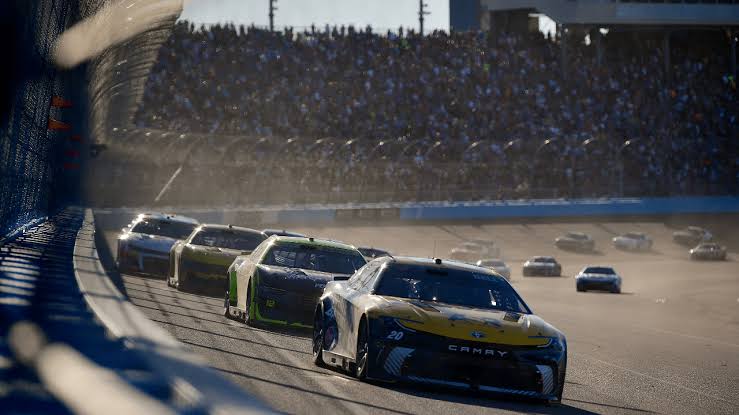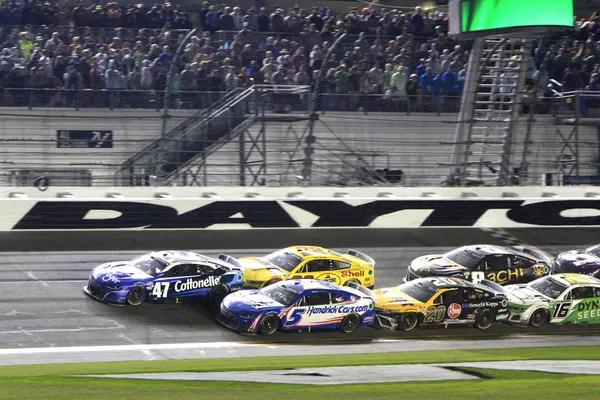This year’s late-race restarts in the NASCAR Cup Series have been nothing short of chaotic. From the wreck-filled finish at Talladega to Austin Dillon’s dramatic double takedown at Richmond, it’s clear drivers are pushing the limits to meet their goals. While this aggressive driving style keeps fans on the edge of their seats, it’s causing concern among team owners like Dale Earnhardt Jr.
The aggressive tactics, while concerning, aren’t entirely the drivers’ fault. They’re simply making the most of the resources they have, including NASCAR’s Next-Gen car, which is increasingly proving to be problematic—not just on the racetrack, but financially for the teams as well.
One major issue that team owners have been raising is the rising cost of running a race team. Even powerhouse teams like Hendrick Motorsports, known for their dominance, aren’t seeing a profit. Jeff Gordon, Vice Chairman of Hendrick Motorsports, revealed to Dale Jr. that the team hasn’t made money in the past decade. In theory, NASCAR’s introduction of the Next-Gen car was supposed to alleviate some of these financial burdens, but instead, it has only added to the expenses.
A small fender bender or a damaged bumper might not seem like a big deal to fans, but for the teams, the cost of replacing these parts—sourced exclusively from authorized vendors—can quickly add up. On his podcast, Dale Jr. discussed how these expenses are piling up for teams and even changing the drivers’ approach to racing.
“They beat the crap out of these cars because the performance penalties aren’t as harsh,” Dale Jr. explained. He pointed out that while drivers might not feel the immediate impact on performance, the financial toll is significant. “That $500 aluminum brace on the front bumper? There are six of them, and they aren’t cheap. Then you have drivers diving into corners, wrecking $10,000 worth of bodywork just to gain a few positions.”
Dale Jr. also criticized NASCAR’s strategy that forces teams to rely on third-party vendors for specialized parts. He highlighted how this setup creates a monopoly that drives up costs even more. “All this carbon fiber and these purpose-built parts—they’re expensive. And the more crashes these cars can absorb, the more damage gets done. And with third-party vendors monopolizing bumpers, it’s hurting teams.”
Dale Jr. isn’t the only one concerned. After the race at Watkins Glen, several drivers were frustrated by the nature of the competition. Road course races are known for their unpredictability, but no one expected only two of the 16 playoff drivers to finish in the top 10. Martin Truex Jr., who desperately needed points to stay in the playoff hunt, won the first stage but couldn’t make any progress, ultimately finishing 20th.
After the race, Truex voiced his frustration, criticizing the overly aggressive driving during restarts. “I don’t get how guys can call themselves the best in the world when they just plow through everyone on restarts. It’s frustrating, but that’s how it is now. I’m done.”
Tyler Reddick, another driver, shared similar feelings after failing to crack the top 10 at Watkins Glen for the first time in three years. “There’s no driver code anymore. It’s gone,” Reddick said in a radio interview. “I saw Truex’s comments, and I couldn’t agree more. I hope things change, but with the old cars, at least you’d pay a price if you bumped someone. Now, you can get away with a lot more.”
Despite the frustrations, some drivers have shown that clean, respectful racing can still happen. At Watkins Glen, Chris Buescher and Shane van Gisbergen battled hard but fair over the last two laps, providing a refreshing example of what racing should look like.
In the end, while the on-track chaos might entertain fans, it’s clear that the rising costs and aggressive tactics are causing headaches for team owners and drivers alike. As drivers continue to adapt to the Next-Gen car, it remains to be seen whether NASCAR will address these concerns or if the sport will continue to head down this costly and chaotic path.
Dale Jr. Reveals How the Next-Gen Car Fuels Drivers’ Drive to Wreck Their ‘$10,000+’ Investment.




